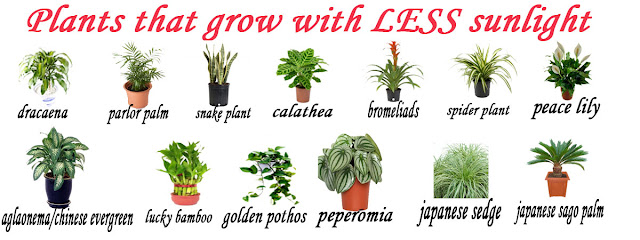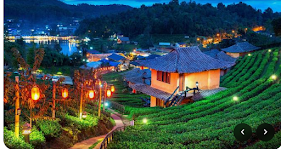Plants that grow with less sunlight
Some plants exist in very low-light prerequisites. If you think about darkest, rainforest canopies, there are plants that grow in that atmosphere. They have evolutionary adaptations to maintain those low-light environments, which include making broad, thin leaves to capture as a lot of daylight as they may be able to.
Plants using photosynthesis absorbs carbon dioxide from the air, receives water from the roots, and use sunlight because the energetic supply to create sugar from water and carbon dioxide.
But.
Fundamentally if a plant is green, it requires sunlight to grow. Otherwise, it can’t continue to exist. Have a space in your home that lacks daylight? Check out our information on different plants that develop without sunlight. It’s true that every plant want no less than some mild, you’d be amazed at how many plants can flourish below indirect gentle or fluorescent lighting.
In this information, I’m going to turn you some of my favourite plants that can develop without much sunlight.
1. Dracaena
Dracaena is a plant that does not require a lot of mild, but it likes humidity, that’s why it grows perfectly outside in zones 10 via 12. Almost every other day you have to water this plant incessantly and mist the leaves if the humidity in your home is simply too low. Dracaena plant care is moderately easy, and they can even withstand a certain amount of forget.
Best of all, dracaena assist to purify the air we breathe.
2. Parlor Palm
One of the most common type of palm is the Parlor Palm, which is grown indoors, is a great option for an area without sunlight. If you want the little yellow blooms to appear on the plant, it will need at least partial sunlight. If they are grown as an outdoor plant, they give the best results in zones 10 and above.
Mostly they are found in single specimens, but most often the palms are grown in small clusters, so that they resemble palm-like shrubs in pretty pots.. The parlor palm plant is a friend to all living things.
3. Snake Plant
SNAKE PLANT, sometimes called Mother-in-Law’s Tongue in a different way SANSEVIERIA, are probably the most perfect plant to handle. This succulent plant is very friendly and very best for inexperienced people. Here we can find out how to maintain a snake plant in your house! Snake plants, which develop the best possible in zones 9 through 11, make a perfect indoor plant as a result of they require little sunlight or no gentle to thrive.
They don't prefer cold climate regardless that, so don’t develop them outside. As it comes from a succulent family, it could possibly tolerate dehydrate stipulations.
4. Calathea (Calathea makoyana )
A daring and beautiful houseplant, calathea appears excellent even without blooms. There are a lot of varieties of Calathea, but one of the most common has luscious, darkish green leaves that experience scalloped edges and silver brush marks on the upper side of the leaves. Underneath, the leaves are a gorgeous shade of burgundy crimson. Evert single Calathea is UNIQUE !!!!
This variety of Calathea is often referred to as a Peacock Calathea plant, its colourful foliage is gorgeous and simple to raise it . The plant requires little or no gentle, nevertheless it does favour wet soil. Since this is considered a tropical plant, it grows very best outside in zones 10 and above, but if it may easily develop indoors in any space.
5. Bromeliads
This is a plant that may continue to exist with false lighting, so it will do smartly in closed rooms windows similar to a rest room. Typically, grown in zones 9 and above, the foliage of this plant forms a cup that helps retain water in order that it might survive drought-like prerequisites. Bromeliad plants provide a unique feeling to the home and bring a way of the tropics and breezy climates.
Growing a bromeliad as a houseplant is very simple, easy and brings fascinating texture and rainbow colours to the internal garden. You are going to have an enduring unique houseplant with a low maintenance.
6. Spider Plant
The spider plant (Chlorophytum comosum) is one of the most flexible houseplants and the perfect to develop indoors as well as outdoors. This plant grow in different weather conditions and other than brown tips there are no problems raised in its growth. The spider plant is so named as a result of its spider-like plants, or spiderettes, which droops down from the mother plant like spiders on its web. Available in many variegated varieties, those spiderettes frequently start out as small white flowers.
As a plant, that grows easiest in zones 8 through 11, the spider plant makes an ideal indoor option that can thrive in low light areas. Truely said, direct fall of sunlight will cause the leaves to burn. It looks great rising in a drooping pot, and it will possibly purify the air in your house.
7. Peace Lily
Peace lilies make excellent indoors for the house or any working station. These pretty crops not only embellish up a living house, but also are superb at filtering the air of the room they are in. Most usually, these plants have darkish green inexperienced leaves and white “flowers.” But what the public call to mind because the flower is in reality a specialized leaf bract that grows hooded over the plant life. Like many in style indoor plants, peace lilies experience medium light and cool areas.
It all depends upon the place where you plant your peace lily plant to seem like.
Peace lily grows nicely without daylight; in truth, direct daylight can injury the leaves, which is why it is best grown indoors. If they're grown outdoor, they do highest in zones 10 and above. Peace lilies likes water, however they also love to develop in well-drained soil.
8. Lucky Bamboo
Lucky bamboo is a simple plant to maintain which makes nice for work places and houses alike. It’s glad growing in soil or water however has the longest lifestyles when grown in soil. If you like bonsai crops, then fortunate bamboo will make a really perfect addition to your house. It’s a logo of good fortune and prosperity making it a common place present and the very best small houseplant. It doesn’t demand direct daylight for its well-being, but whether it is planted outdoor, it will develop best in zones 9 and above.
Lucky Bamboo is grown in a shallow dish of water with clean pebbles and can grow this plant into the soil directly. Lucky Bamboo may be matter to fungus & mildew at the roots so changing the water & cleansing the vase as needed will help. The lower the light, the fewer rising it’ll do.
9. Chinese Evergreen
Chinese evergreens are often referred to as Aglaonema.If you’re a starter in gardening, they’re the no:1 simple maintenance houseplants in the market... We can keep this as table top plant. We can develop not only without sunlight ,it might probably tolerate drought-like conditions as well as top humidity ranges.
Agalonemas in low mild light will develop slower. This plant will develop neatly in nearly every hardiness zone within the country. The larger varieties are low, wide floor plants with a rounded, long form and also with lots of varieties, leaf sizes and shapes, and patterns of Aglaonemas. Be certain to rotate your Aglaonemas each and every few months in order that they get sunlight from each side.
10. Golden Pothos
Golden pothos, often referred to as devil's ivy, is the very best indoor plant to care for as a result of it may possibly resist rare watering and shady places. This vine grows neatly outside in upper hardiness zones, however it could flourish in indoors in any space of the country, especially since it may possibly develop without direct daylight. The long vines make it an excellent plant to hold from the ceiling as a result of they can develop to 10 toes in period indoors.
One advantage of growing pothos is that they're top in purifying indoor air of chemical compounds akin to formaldehyde, trichloroethene, toluene, xylene, and benzene.
11. Peperomia
Peperomias are there more than 1,000 identified species, all with deep fleshy leaves that give a contribution to their drought tolerance and vigor. Peperomia are very best grown in zones 10 thru 12, it is a plant that may do well inside in any area, particularly without direct daylight as a result of it will injury the leaves.
Make positive to keep the soil moist and the humidity within the room quite prime, and this plant will thrive. Leaves could also be textured or smooth; purple, inexperienced, grey, or pink; variegated, marbled, or forged; large, heart-shaped, or tiny. ... The peperomia plant is a brilliant choice for those who tries to start indoor collections.
12.Japanese Sedge
Japanese sedge plants are low rising, clumping plants, with a tidy addiction and tolerance to each vivid and semi-shady places. An attractive, mounding, decorative grass with stiff, sharp green and creamy white striped blades... Most adapted to zones 5 through nine, the Japanese sedge is an ornamental grass that may develop without much daylight.
Making an excellent accessory plant for any garden, it tries to grow in rich, wet soil with a layer of mulch at the surface to offer protection to the roots.
For versatile attractiveness, check out growing Japanese sedge as a border, groundcover or accessory plant with striped long blades. We can plant this Sedge in bins and rock gardens. Grows in moist spaces, thriving at a pond's edge. Evergreen.
13. Japanese Sago Palm
Most of sago palms are not original palm trees at all. These horny, low-growing crops are in truth cycads, they are tropical and subtropical plants. Because they are native to warmer climates, In most spaces of the country sago arms should be grown as an outdoor.
Always try to keep these Sango Arms in Shady, cool places as it help the plant to get the good foliage. Sago fingers are extremely slow-growing and incessantly put out only one new frond each and every year. This plant has numerous feather foliage that may look nice in your house or lawn. It does great in a space with little or no sun, however it requires well-drained soil to stay healthy. If you’re planting a sago palm open air, it will do easiest in zone eight and above.
Hope you got a good idea about all these greens!!!
Please comment........




Comments
Post a Comment